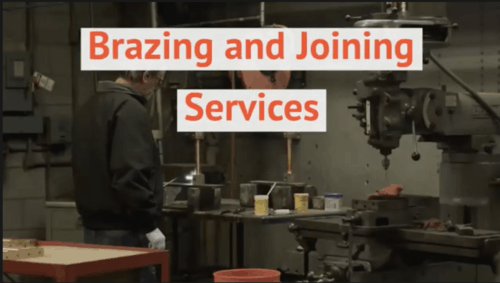Vacuum Braze
Vacuum Brazing is a metal joining technique where the parts, including ETP copper, are joined together in a high temperature vacuum environment (10^-5 torr or greater). The vacuum used in this process acts as the flux or cleaning agent for the parts, helping to remove oxides and facilitate brazing. The two types of Vacuum Braze are Partial Pressure and Hard (Full) vacuum, both utilizing alloys very similar to the ones used in hydrogen brazing.
Hydrogen Braze
Hydrogen Brazing is a metal joining technique where the materials (typically ceramic, steel, stainless steel or oxygen-free copper) are joined together in a high temperature hydrogen environment. The braze filler material (braze alloy) is usually a combination of copper, nickel, and precious metals such as gold or silver. Hydrogen Brazing often acts as a cleaning agent by removing oxides, leaving most materials very bright and shiny.
Partial Pressure Braze
Partial Pressure Vacuum Brazing is very similar to vacuum brazing, it’s just done at less vacuum (10^-3 torr) than pure vacuum brazing (10^-6 torr). We pull a full vacuum on the parts and furnace, and then introduce a gas (usually hydrogen, argon or nitrogen) to reduce the vacuum.
Partial Pressure Vacuum Brazing, especially when the additional gas is hydrogen, is a better environment for copper, brass, silver, and nickel. It is also an ideal environment for Mu Metal.
Torch Braze
Torch brazing, also known as “silver soldering”, is an effective way to braze parts where a localized heating zone is required. Soldering and brazing with a torch is accomplished by fluxing the areas to be joined, then applying the alloy. The alloy often has tin or zinc in it to reduce the melting temperature.
Induction Braze
Induction Brazing is very similar to the many other brazing processes done at ThermoFusion, except in this process only the braze alloy and the mating surface are heated – the rest of the part stays cool. An alternative to torch brazing, Induction Brazing uses both flux and alloy to join the components together.
MIG and TIG Weld
MIG and TIG welding are a few of the two most common welding techniques used. Very similar to other types of welding, MIG and TIG welding are each used to join two parts of a single material together. If there is a mistake in brazing, these welds will repair the issue, especially in aluminum.
Low Temp. Soft Solder
Low Temperature Soft Solder, usually under 400F, is a useful way to join metal parts. Soldering with a torch is accomplished by fluxing the areas to be joined, followed by applying the alloy. The alloy often contains tin or zinc to reduce the melting temperature.
Top


